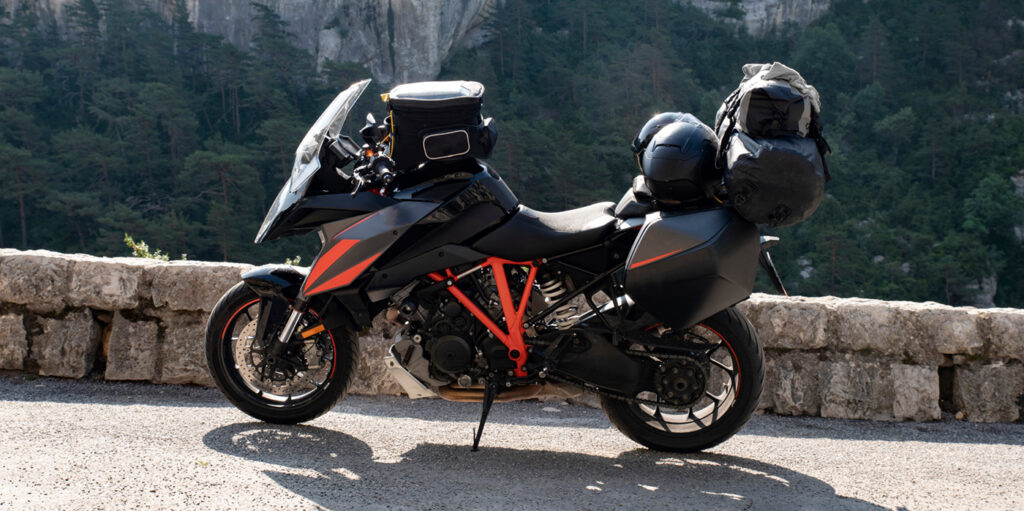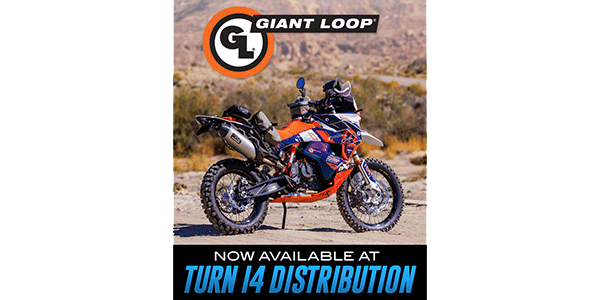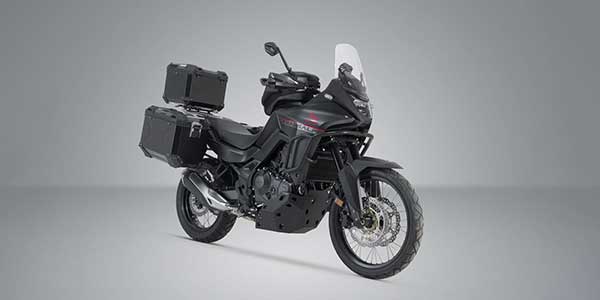If someone were to say “adventure motorcycle,” your mind might jump to an image of a BMW motorcycle with aluminum panniers or a to a KLR with plastic luggage and a milk crate. These hard luggage options might be good for city goers or even Round the World (RTW) travelers who need lockable, secure and waterproof storage solutions. However, in many cases, soft panniers, textile saddlebags, dry duffle bags and roll bags are the best way to travel.
Soft luggage is “the way to go” for many adventure bike riders for several reasons. Some of the key reasons that more adventurous of riders choose soft luggage are the cost, infrastructure, safety and space. Now, let’s dig into each of these individually.
Cost
A good set of hard panniers can cost anywhere from $1,500 to $2,800, depending on the brand. There are some expensive soft luggage options as well, but on average one can purchase a set of soft saddlebags starting at just the $200 mark. Another thought on cost is: What happens when one crashes? An aluminum pannier can crumple, bend and break, whereas a soft pannier will tear, but it can be sewn, patched or replaced at a minimal cost.
Infrastructure
Soft luggage is much less stressful on the frame of the motorcycle. Generally, hard panniers attach to a frame, which bolts to the frame and subframe of the motorcycle. When an accident or drop occurs, the shock of the hit is transferred directly to the frame of the motorcycle. This can cause stress cracks, fractures and even broken mounts. Additionally, hard bags can crack, be knocked out of shape and may not even fit to the rack after a crash. Then what? Soft saddlebags or panniers “squish” in a crash, absorbing the shock and thus minimizing the force transferred to the motorcycle.
Safety
While on the topic of force being transferred, if a leg or other body part were to get caught between a hard pannier and the ground … something breaks, and most often it is the body part. Be it a foot, ankle, knee, leg or even an arm, it’s typically the body part that ends up absorbing the impact, and this not only very dangerous it could be ride ending! Soft panniers, on the other hand, are much more “user friendly” when it comes to body parts that encounter the bag and can mean the difference between some bruising and/or broken bones.
Space
Hard panniers and top cases have a specific shape, and therefore volume that cannot be altered. If a rider has (or acquires along the way) more gear than the hard pannier/top case space will allow, that is a problem. Conversely, in the event the hard bags are only half utilized, the gear tends to bounce around inside the case like a BB in a box car, and oftentimes items can and do end up broken.
Most soft luggage, on the other hand, is typically attached with straps, and any “extra item(s)” can be strapped to the top, to the side, to the front or to the back of the bag, essentially expanding the carrying capacity. Alternately, if the rider has less gear than takes up the internal space of a soft bag, the straps can typically be pulled tighter to compress the bag, pulling the contents tightly into the motorcycle. This not only decreases the “size of the luggage,” but it also keeps the cargo from shifting or jostling when bombing down the road. Furthermore, if a soft piece of luggage is empty it can often be removed from the motorcycle, flattened and stored either strapped to the outside of another luggage piece, or stored on the inside, if space allows.
At the end of the day, soft luggage is not only a very cost-effective way to go, but it is also very versatile and for sure the safest when it comes to crashing. As a bonus … a piece of soft luggage can be used as a pillow if ever stranded on the side of the road.
Kyle Bradshaw is the band manager of Nelson-Rigg/Rigg Gear Adventure, which has been producing motorcycle apparel, soft luggage and motorcycle covers since 1972.














